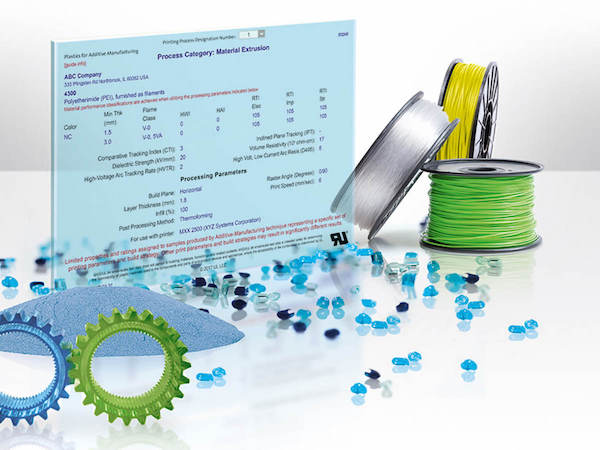UL Study Identifies Safety, Performance Variability for 3D Printed Plastic Parts
New Blue Card certification for plastic AM will provide guidance for integrity, safety of 3D printing materials.

The UL Blue Card certification program will provide guidance on the safety performance of 3D printing materials. Image courtesy of UL.
Latest News
March 30, 2020
Safety science company UL has published research findings detailing the effects of 3D printing on safety-critical polymer performance properties. The findings have been used to develop a framework for evaluating and qualifying materials, which UL says will help stakeholders across the additive manufacturing (AM) supply chain “to mitigate risk and deliver quality and performance.”
UL investigated the flammability, ignition and electrical properties of samples that were 3D printed against samples manufactured using conventional, injection-molded methods. Researchers identified significant safety and performance variations and concluded that performance ratings from traditional manufacturing techniques cannot be applied when the same material is used in a 3D printing process to print a 3D part.
In response, UL has developed a certification program for plastics for additive manufacturing called Blue Card. According to UL, the Blue Card presents the data necessary to ensure the integrity and usefulness of materials intended for 3D printing and 3D printed components and products. A Blue Card is automatically issued when a material intended for 3D printing receives a UL Recognized Component Mark.
UL Certified AM materials are published in UL's publicly available and searchable Product iQ database. As Blue Cards are specific to a 3D printer, a 3D printer manufacturer can also certify material for explicit use on his equipment.
According to the research, safety properties of these materials can be affected in a number of ways. Air gaps/voids can have differnet dielectric properties than a polymer and could act as an insulator to electric current, for example. These gaps can also reduce the thermal mas of the exposed surface and increase ignitability. 3D printined parts may also have greater surface area density or vertically oriented channels that can further increase flammability or lower a specimen's flame rating.
UL tested frABS flame retardent poly filament and PEI polyetherimide filament. By comparing 3D printed and injection molded specimens, the researchers found that the printed items had lower dielectric strength/resistance, worse flame ratings, and longer burn times.
The UL 94 Flammability Test found that 3D-printed frABS specimens scored lower than injection molded specimens; however, printed PEI had comparable or slightly better scores than injection-molded PEI.
The full study can be downloaded here. A white paper based on the findings is also available here.
Subscribe to our FREE magazine, FREE email newsletters or both!
Latest News
About the Author
DE’s editors contribute news and new product announcements to Digital Engineering.
Press releases may be sent to them via [email protected].






